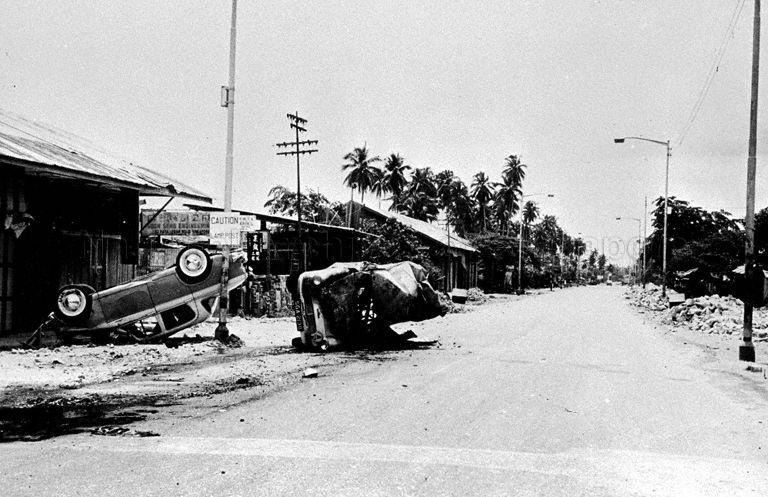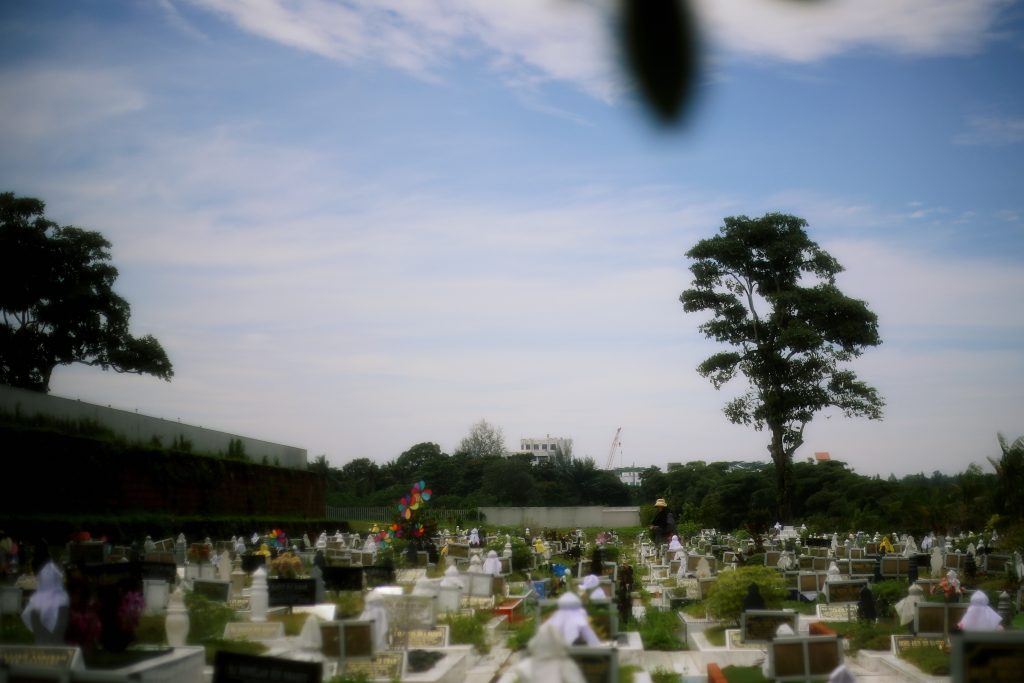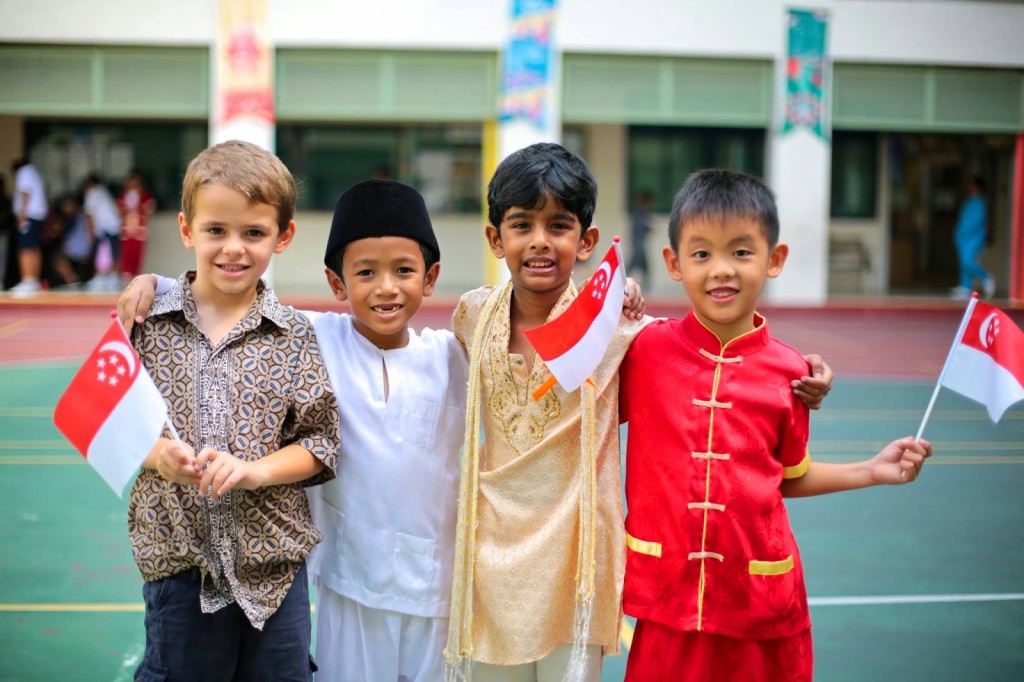Top image: RICE file photo
I’m sure we’ve experienced this during Racial Harmony Day as a student: donning on ethnic costumes, enjoying cultural dances put up by the different races and replaying historical videos of the 1964 racial riots, with teachers reminding us to tolerate everyone’s racial differences.
And that’s it for the year. Outside of July 21st, we hardly bring anything up race-related in class.
But how race is broached in school has been increasingly thrown into the spotlight, especially after the recent spate of racist incidents. These incidents had Singaporeans talking about the importance of education in tackling racism. “Education” is always the de rigueur buzzword whenever we want to change social behaviour.
This being said, to simply preach about tolerance and rehash the narrative of the racial riots is insufficient these days. As then Senior Minister of State for Education Janil Puthucheary said in 2017, young people now want to go beyond, and their concerns are no longer linked to security and safety issues of the 1960s.
Okay, so we want to see change. Everyone has given their two cents’ worth on tackling race in the classroom, ranging from experts, parents, students, and everyone else … except the teachers. Their voices are notably absent because they are bound by strict Education Ministry rules on expressing views publicly.
In light of this and since today is Racial Harmony Day, I sought the perspectives of three teachers—one from each race—which are based on actual events that were shared with us. They are speaking on condition of anonymity as they are unauthorised to speak to the media.
Their first-person accounts have been condensed and compiled from a longer interview, with edits for length and clarity.
While these are only the views of three teachers, and may not reflect the situation in its entirety or the practices of every school, I believe these accounts will give a valuable look into how race is taught, and how teachers tread on this sensitive topic.
A female Indian teacher, who is a senior citizen and teaches at a primary school. Years in the industry: More than 50 years
I was there when the 1964 race riots occurred. I was teaching halfway in school (which was in the city) when we were sent home. On the way home near Geylang Serai, I saw dead bodies laid along the streets. It was horrible and we eventually have Racial Harmony Day to commemorate that experience.
Alas, do students really know what’s going on when we celebrate Racial Harmony Day? Yes, we put on different ethnic costumes on this day and showcase food and games from different communities. But it doesn’t improve anything significantly. It’s just one day, after which, students would forget about it. In my previous school, students still tend to congregate among their own races. As recent as last year, some of my upper primary students commented that migrant workers living in the dormitories were smelly, and I had to step in to teach them that we shouldn’t say such things and that Singapore is not a Chinese country, but a country where all races co-exist.

Schools still approach race cautiously and don’t delve deep into it. If I could have my way, I would prefer to speak about the topic more candidly, even if it may contain inconvenient issues. For now, our hands are tied. For instance, it will not be a good idea for me to discuss the racist remarks incident made by the polytechnic lecturer with my students, unless they raise it up.
When they do so, I would make it into a teachable moment, telling kids that we should not judge others and everyone is equal. If I’m the one who started it, the optics will be more troublesome because students will go home and tell their parents that their teacher raised so-and-so issues in class.
Children tend to be race-blind and not prejudiced. When I showed a picture of my fair-skinned grandchild to my students, not once did they mention anything about race. It was no big deal for them and they were only focused on the cuteness of the child. In contrast, when I showed the photo to my colleagues who are my best friends, some commented that my grandchild is lucky to resemble a Chinese. I was hurt but kept mum so as to not ruin the friendship.
Sometimes, parents feed their children with toxic ideas which seep into the classroom. There have been instances when Chinese parents requested me not to put their child next to an Indian student because “Indians are smelly”. Sometimes I give in to the parents, sometimes I don’t. These things happen even in the 2000s. Ultimately, educating children about race should start at home and parents should do so in the right way.
A female Malay teacher in her 40s, who teaches English, Math, and Science at a primary school in the west.
Years in the industry: 22 years.
I feel that the current curriculum is sufficient, at least at the primary school level. Race is part of the Character and Citizenship Education (CCE) programme, which we shoehorn into our English lessons. But there can be improvements, of course, where the CCE syllabus is concerned. Currently, it can be quite diluted and there’s a rush to complete it. Hence, we don’t usually delve deep into issues within the CCE, which includes teaching about race.
When I do bring up race issues during lessons, I tread on it very cautiously, especially when my students ask me questions on them (thankfully I have yet to receive any complaints from parents about what I taught in class). I try to gear the discussion towards a more positive direction. I would try to share with them about empathy and to put oneself in the shoes of others.
There was once when some minorities in class asked for the reason Chinese people organise a wake and leave the deceased’s body in a coffin at a void deck for numerous days.

Before I answered them, I asked the class: “How many of you enjoy Char Kway Teow, Ban Mian or Yong Tau Foo?” Many hands went up. I explained that if we didn’t have the Chinese around us, we wouldn’t have had those dishes mentioned.
I added that, as much as we enjoy their food, we must also be tolerant towards their culture and practices. Anyway, it’s not as if the Chinese around us have funerals every day. A few days of ceremonies and chanting doesn’t kill. In fact, moments like this help us to be more patient, tolerant, and accepting towards other races, just like how non-Malays tolerate noise from the kompang (a traditional Malay musical instrument) during Malay weddings.
There’s only this much we can do as teachers, regarding education about race. Perhaps more support is coming soon from the ministry, with the introduction of a new CCE 2021 curriculum. But home support is more important. As teachers, we introduce the values in school while parents ensure they are carried out at home or even beyond.
A 29-year-old male Chinese teacher, who teaches English and Math at a primary school in the west. Years in the industry: 4 years.
At the start of the year, I tasked my primary four students to write what they love about their class. Imagine my shock when a boy wrote that he was glad to have only one Malay classmate in a class of 40. Unfortunately, when my co-form teacher and I wanted to pursue further, the student had removed the offending page. There was no evidence left to follow up and we can’t accuse the kid of something that wasn’t there. He probably realised what he wrote was insensitive.
That’s why the work on racial harmony never ends. It’s also important for parents to start educating their kids at home, even though the responsibility lies with both parents and teachers. It defeats the purpose of teaching anything in school if we teach a set of values in school and kids learn something else at home.
In my school, we approach race issues very carefully. In fact, they are rarely touched upon until when Racial Harmony Day nears. Even so, what’s taught to students is still the same: we are a multi-racial and multi-cultural society. The same narrative is paraded year after year. We don’t analyse recent events or speak about race issues honestly. Ditto for this year too.

When my colleagues and I proposed to delve into recent race-related incidents for upper primary students, our superiors rejected the idea because the issue is too heavy for students to digest within a short time. They suggested using a more palatable example, such as the “curry dispute” which had a positive and ground-up “cook and share a pot of curry” campaign.
But that incident happened a decade ago. We must understand that kids are now more “woke” as they are exposed to social media from a young age. They are more aware of contemporary issues. A student in the past could get away with making insensitive remarks but students these days are sharper—any signs of racism or insensitive remarks will be highlighted quickly by teachers or their peers.
This is why teachers must bridge the social media vs ground reality gap. We have to amplify core values which are missing from the discussion of recent incidents, such as respect, instead of focusing on the negativity of the issue.
If I have one wish, I would appreciate it if the Education Ministry could provide more resources for us to teach about race. Currently, we are expected to create our own resources based on minimal guidelines. Let’s not leave everything to teachers. We are worried about navigating race as we are in the public eye. We end up not delving deeper into race issues because we choose to err on the side of caution.
What do you think of the way race is taught in schools? Tell us at community@ricemedia.co.
If you haven’t already, follow RICE on Instagram, Spotify, Facebook, and Telegram. If you have a lead for a story, feedback on our work, or just want to say hi, you can also email us at community@ricemedia.co.






